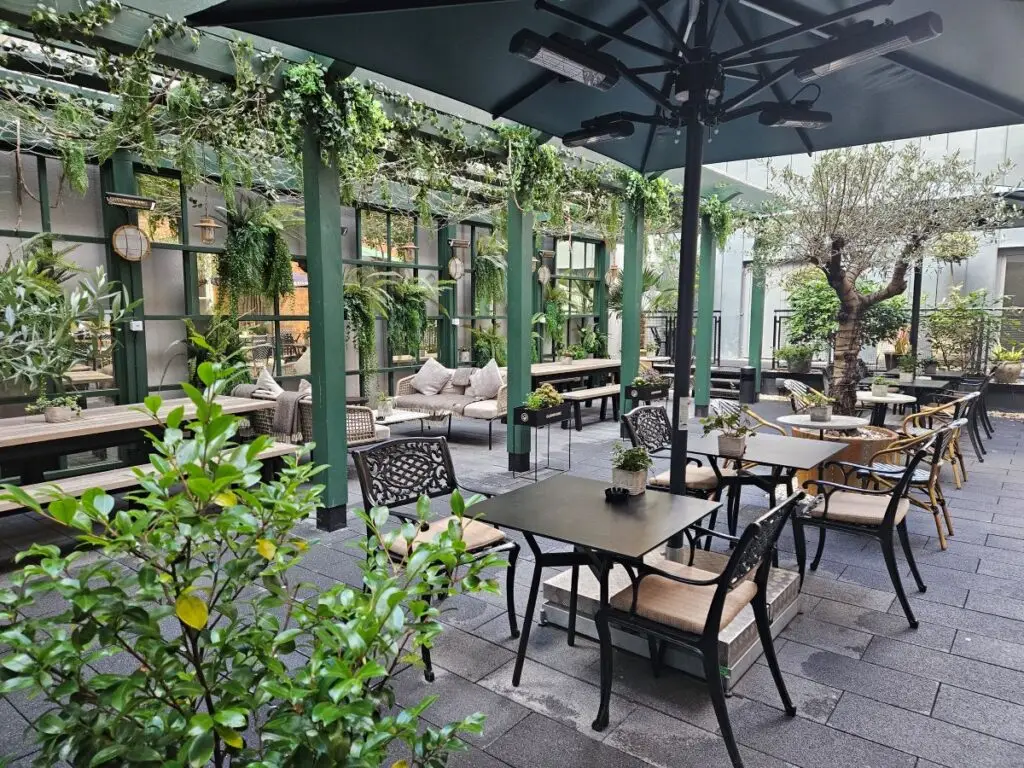Why ‘quiet spaces’ are a great addition to your next event

Dedicated quiet spaces can be a great addition to your next event. They create an inclusive and welcoming environment for all your guests and show that you care about their wellbeing.
Events can be quite overwhelming environments for some people. They are often loud, busy places, with lots of networking and new people to meet. Plus, with more and more people working remotely, opportunities for face-to-face connection are fewer than perhaps they previously have been. This can create new anxieties in some people when faced with a larger crowd, or unfamiliar environment.
Events can also be difficult places for those with a disability or guests who are neurodiverse. When planning your event, it is important to provide an environment which is inviting and inclusive so that all your guests can have an enjoyable experience.
Also read: How to plan an inclusive event
Tips for creating quiet spaces at your next event:
Being in a busy environment with lots of conversations and networking can quickly drain a person’s social battery. Having dedicated ‘quiet spaces’ is a simple way to provide an area where guests can take a moment to recharge and get some head space. A quiet space also creates a more inclusive environment for those who are on the autism spectrum or have high sensory sensitivity by creating a space for self-regulation. The space should be an inviting, comfortable space, with cosy chairs, nice scents, plants and refreshments.
Here are some ideas to consider when creating your event quiet room:
1. Create a comfortable environment
The quiet room, or quiet spaces should be a place where attendees can come to relax and recharge. Make sure there is a variety of options for comfortable seating, such as sofas and cushions. Create an ambience with low lighting and plants, and use a relaxing colour palette. You could even provide an area for stretching, with yoga mats and online yoga classes.
2. Use Aromatherapy
Aromatherapy can enhance the experience of a quiet space. Use essential oil diffusers with scents like lavender, eucalyptus, or chamomile, which are known to promote relaxation and reduce anxiety. However, be mindful of allergies and sensitivities.
3. Bring the outdoors in
It is well known that being outside in nature has great benefits for our mental well-being. If there is an opportunity to provide a quiet area outside, for example, an enclosed courtyard or garden area, this could be a nice touch. However, if you do not have access to an outdoor area, then try bringing the outdoors in. Including indoor plants or small water features can boost relaxation. You could also replicate this with sounds of nature played through speakers, such as birdsong or rain.
4. Limit the use of technology
Set rules in the quiet space where technology is discouraged. For example, on entry, attendees can be asked to lock their phones in a secure lock box for the duration that they are in the room. This allows attendees to fully switch off and disconnect.
5. Use music and noise-cancelling headphones
Consider offering noise-cancelling headphones in the quiet room for attendees who need extra help blocking out surrounding noise. These can be especially useful for events where complete silence is hard to achieve due to proximity to louder areas. Prepare a variety of playlists for the user to choose from, including uplifting music, calming music or guided meditations.
6. Provide mindful activities
Provide activities such as colouring books, painting, knitting or puzzles. Basic activities like these can help us to switch off a busy mind and simply focus on enjoying the activity. This is a great way to encourage relaxation for people who otherwise find it difficult.
7. Create ‘calm corners’
If it is not possible to have a separate quiet room in your venue, then creating several ‘calm corners’ is a good alternative. Or if you have a particularly large venue, having pockets of seating areas which are slightly tucked away in the corners, or away from the high-traffic areas is a great way to add additional calming zones. These calm corners are perfect for more intimate 1-1 conversations. They are also helpful for event attendees who find it difficult to hear clearly in busy environments.
8. Promote your quiet spaces
Now that you have created a great quiet room, or quiet spaces for your event, make sure that you tell people about it! Ensure that the quiet space is well signposted so that all guests know where to find it and include it in all pre-event attendee communications. This will reassure some guests that there is a safe space they can retreat to if they find it all a bit too much.

Why ‘quiet spaces’ are an important addition to your next event:
By carefully designing a thoughtful, quiet space, or calm areas, you can create a refuge within the event that supports mental well-being and inclusivity, helping all attendees have a more balanced and enjoyable experience.
Here are some of the benefits of providing a ‘calm’ or ‘quiet’ area in your event:
It can reduce event fatigue
Long events or conferences can lead to fatigue, especially when attendees are presented with a lot of information and are faced with a lot of social interactions. A designated quiet room, or calm areas allows your attendees to have a moment to themselves or in small groups to rest, think and recharge. This helps regain focus and energy, leading to higher engagement.
Promotes Mental Well-being
Events can be overwhelming for some, with crowds, noise and lots of social interactions. A quiet space offers attendees a chance to step away from overstimulation and recharge mentally.
It can improve productivity and focus
This is particularly relevant for corporate events when attendees have to take in a lot of important information or participate in activities and workshops. Having a quiet space, or several ‘calm corners’ within your venue allows attendees to absorb, reflect and review the information they have been given. It can also provide a good working environment for contributing to any activities or post-event actions.
Provides an inclusive space for neurodiverse event attendees
Individuals with sensitive sensory processing, such as those on the autism spectrum, can find loud, crowded environments stressful. A quiet space creates a more inclusive environment by offering them a place to take some time to self-regulate without feeling like they need to leave the event.
Enhances networking opportunities
Many people fear networking, or socialising with new people, however not all networking experiences need to be held in loud, open spaces. People who are more introverted may find it much easier to strike up conversations in smaller, quieter spaces, rather than in loud crowds. When designing your networking space consider both types of networkers, to provide a setting where everyone can feel comfortable.
Boosts creativity and innovation
Some people generate their best ideas in moments of quiet reflection. A dedicated space for calm and peace can allow attendees to think creatively, solving problems or coming up with innovative ideas that they might not in a noisy, fast-paced environment.
Why are quiet spaces at events so important?
Incorporating a quiet space into event planning not only shows empathy toward attendees’ varied needs but also enhances their overall experience, contributing to the event’s success.

If you need support or guidance creating the perfect quiet space for your next event, get in touch and let’s chat!



